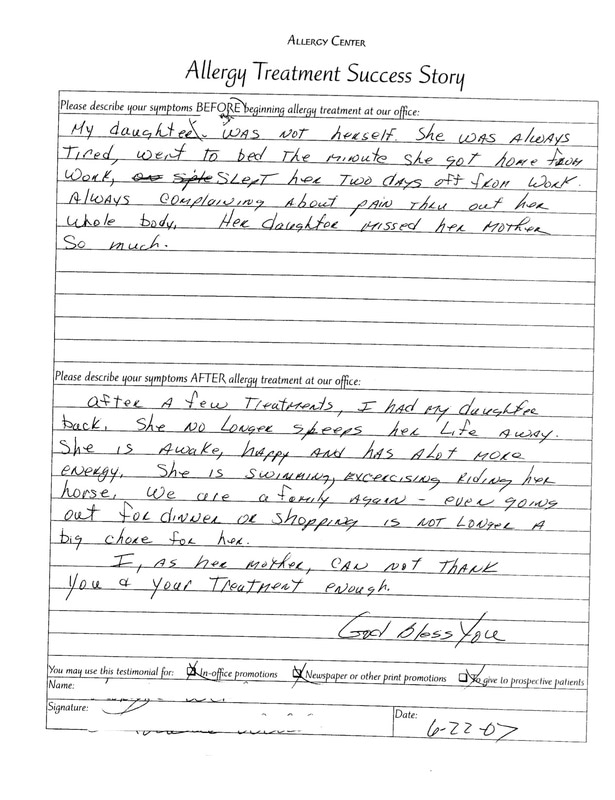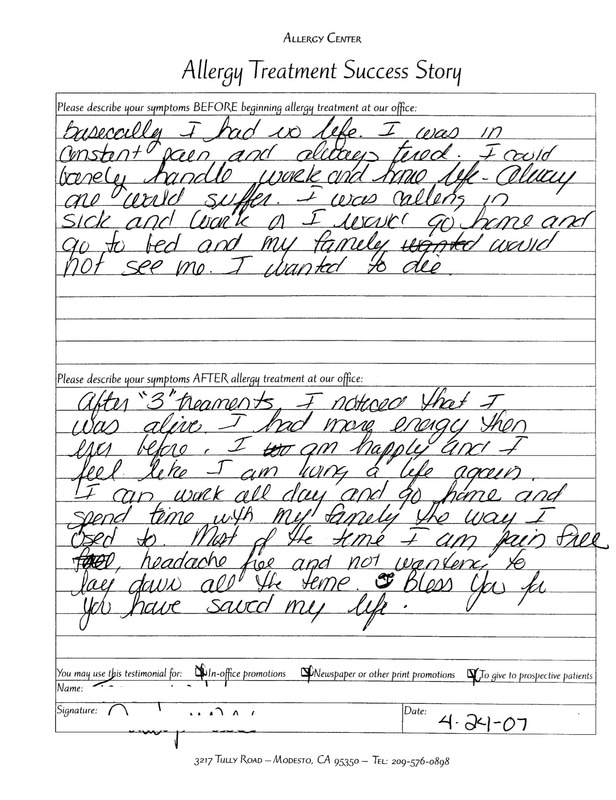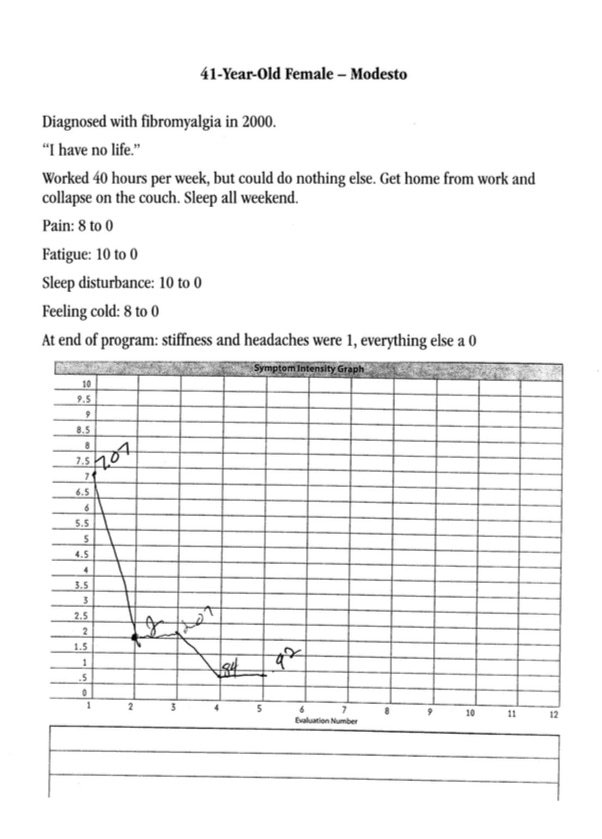|
Here's an old testimonial from back in my BioMeridian MSAS Pro days, the late 90s–early 2000s. This was a Mennonite family from a nearby town. The mother brought her about-3-year-old son in for testing and treatment. I remember they lived on an almond ranch owned by, I think, her father-in-law. I recall she was a nurse, or at least had some medical training. This made it a little hard for her to have much "faith" in my treatment. She wouldn't have come in if not for a strong referral.
Adam (I've changed his name) was a quiet, cute little boy who wore a hat. I don't recall him being too afraid or concerned about the tip of the testing probe touching his finger. Here's what his mother wrote after his treatment: “Adam had chronic ear infections beginning at 2 months of age. By 31 months he had received 29 courses of antibiotics and needed tubes in his ears. Prior to consenting to surgery we decided to explore other options. We had a blood test for his food allergies. He was allergic to all the common foods he ate. His symptoms of ear infections, asthma, and irritability were completely controlled as long as he didn’t eat the offending foods. Over the next 2 years we were unsuccessful at reintroducing the allergic foods." After Dr. Boothe’s Sensitivity Treatment: “After just a few treatments Adam is now eating milk, eggs, cheese, and wheat. He has not had any problems with asthma or his ears since we introduced the foods this time. Our life is much easier now that all meals do not have to be planned around allergies! What an exciting day it was for Michael when he discovered he could eat ice cream without an asthma attack.” Notice they had, through blood tests, found many things Adam was allergic to and that avoiding the foods successfully controlled his symptoms. They could have gone on like this indefinitely, restricting his favorite foods from his diet. But what a way to live! The quality of his life was improved greatly by helping his body understand the foods in question were not really dangerous, which is all SET-DB™ really does. The mother also received some treatments, I've forgotten what for. I do remember she received some while pregnant. She asked me if the treatment could be dangerous to her unborn child. I told her the treatment involved far less current than a static electricity discharge, which certainly couldn't hurt an unborn child. I touched on treating pregnant woman in the SET-DB™ Practitioner Manual. Recall that I said I treated pregnant woman but it was up to you if you do. We live in such litigious times that many practitioners choose to avoid any action that might possibly lead to a legal attack. Even when it could significantly help the patient. Back to treating children. While I recommend against allowing an adult to go through an incomplete treatment program, where you treat items off the results of the Common Foods scan you did on their first visit, it seems to work fine with children. Just be sure you explain to the parent or guardian that adults can't get away with skipping the nutrients like children can. We're far more toxic, have experienced much trauma to our nervous and immune systems, and have likely lived with untreated sensitivities for many years.
0 Comments
This was a fibromyalgia patient of mine from 2007. There's nothing "special" to be learned from this case. I only present it to once again demonstrate how quickly fibromyalgia patients can be feeling better with the SET-DB™ Fibromyalgia Treatment Program, and to lead into a discussion of why I sold the program as a series of treatments instead of allowing patients to pay visit-by-visit. One thing different about this 41-year-old single mother was, she was still able to work full time. She had 2 or 3 kids (remember, this was 10 years ago) and lived with her mother. Speaking of her mother, as I recall she was so happy with her daughter's recovery that she offered to write a testimonial as well. Here are the 2 testimonials: Notice how the patient wrote "I wanted to die." It was obvious she wasn't suicidal, but felt she had very little quality of life. Yes, she was able to work full time, but you and I know that some people can push through pain better than others. And her job was the main source of for the household. Here's her Symptom Intensity Graph: We see here the typical free-fall in the graph from when the patient presented to when they completed their first symptom questionnaire, after their first 6 visits. She went from 7.07 to 2, nearly a 75% drop in her overall symptom pattern (I tracked the top 13 symptoms of fibromyalgia). She ended at .92, an 87% drop in her overall symptom profile.
Now, what might have happened if I didn't sell the treatment program as a package and the patient was paying visit-by-visit? She likely would have dropped out after 6 treatments, or earlier. I can see where some may argue in favor of her stopping the program early. After all, at 6 treatments in her symptoms had dropped 75%. (The FDA approved Lyrica for the treatment of fibromyalgia after a couple of trials where it dropped ONE symptom—pain—by about half that.) It comes down to your treatment philosophy: how well do you want your patients to get? I wanted to help my patients get as well as possible. If you learn one thing from reading Dr. Nambudripad's first book, Say Goodbye to Illness, it should have been ANY sensitivity can cause ANY symptom. I wanted to get rid of as many of my patients' sensitivities as they'd let me. Overall, the people who went through the SET-DB™ Fibromyalgia Treatment Program saw, on average, their symptom profile drop by 67% and 80% of the cases were successful, meaning both the patient and me were happy with their outcome. |
AuthorDr. Teryl Boothe and selected guests. Archives
January 2024
Categories
All
|



 RSS Feed
RSS Feed